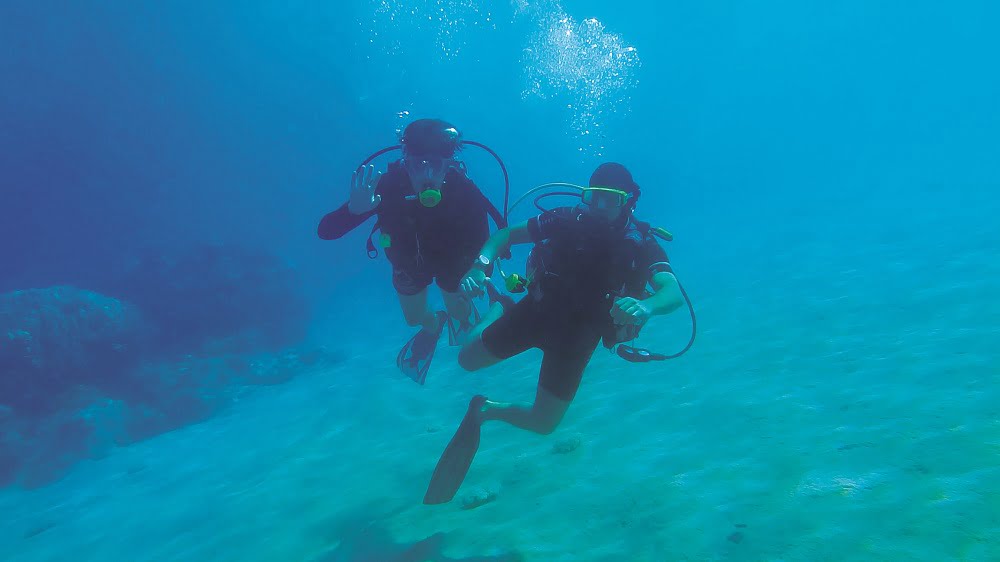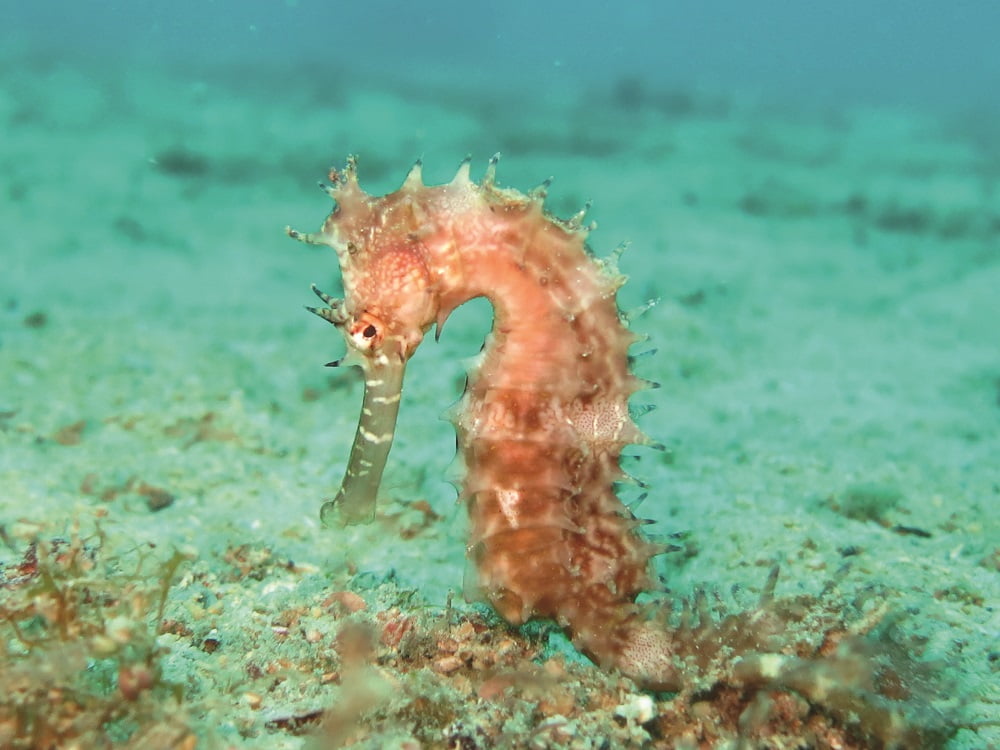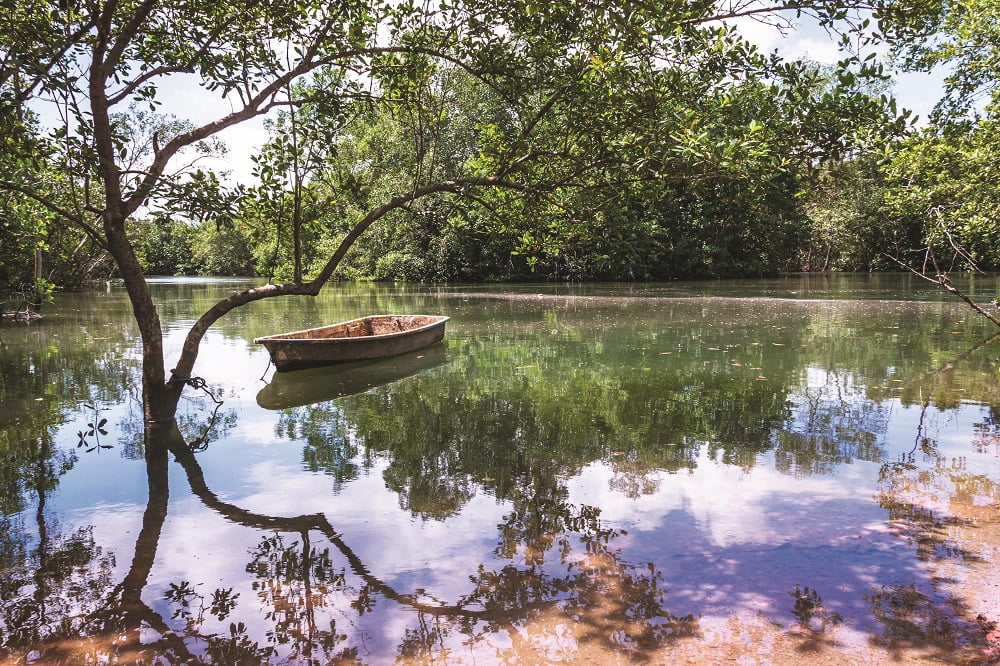
Pulau Hantu
A few kilometres south-west of Sentosa Island, Pulau Hantu comprises two islets with a surrounding reef. The area has an abundance of hard and soft corals, and local marine life including clown anemone fish, anemone shrimps, giant clams and a wide variety of nudibranchs. Bamboo sharks are also spotted and divers are encouraged to report sightings to the Coastal Marine Ecology and Sustainability Laboratory (cmesl.org/sharks), where a team from Singapore’s James Cook University is studying the biology and ecology of this species.
Debby Ng started an online blog, The Hantu Bloggers (pulauhantu.sg) in 2003, to showcase the diversity of marine life. This developed into a non-profit volunteer dive organisation, raising awareness and inspiring action to protect Singapore’s biologically diverse reefs.Funds are raised through public guided dives of the reef. Group members also undertake educational talks and assist researchers and local authorities such as the Maritime Port Authority.
An important part of the Hantu Blog’s work is education. “Part of our work is to help people realise why it’s meaningful for an urban country like Singapore to understand and develop our coastal areas in a sustainable way,” says Debby.
The Hantu reef also hosts a vulnerable population of tigertail seahorses, who play a significant role in the marine ecosystem. Divers and snorkellers can report sightings through the global initiative Project Seahorse at iseahorse.org.
Hantu Blog members’ frequent visits to the reef mean they can monitor changes in the area. Divers noticed a significant amount of construction debris around the reef and reported this to the Maritime Port Authority, who sent out a surveyor team. A salvage operation was planned, and members of the dive group took the engineers out to the reef to help crane out the debris, which included paint cans, paint rollers, and boxes of nails. “Because we’re at the reef regularly, we could narrow down the time window to when the debris likely appeared,” says Debby. “This helped the Maritime Port Authority track down the responsible party.”

Sisters’ Islands
The waters around the Sisters’ Islands, south of Sentosa, were designated Singapore’s first ever marine park in 2015.
“This was a very important step for marine conservation in Singapore,” says Debby. “National Parks engaged all marine users in the process, to provide them with reef awareness. People were used to going wherever they wanted, but these new laws now govern how they interact with the reef.”
The Marine Park protects coral reefs, inhabited by rare and endangered species of seahorses, clams, fish and other marine life. It’s also home to Singapore’s first turtle hatchery, providing a favourable environment for baby turtles to incubate, hatch safely and make it out to sea. Despite the busy waterways around Singapore, the coast is home to several species of turtles, including Hawksbill and Green turtles. The hatchery aims to increase the survival rate of turtle babies through technology, research and community involvement.
Late in 2018, as part of the National Park Board’s ‘Grow a Reef Garden’ project, an artificial reef structure was sunk within the Marine Park. The project will add additional reefs to the area, to support and enhance the existing habitat.
For visitors to the Sisters’ Islands, National Parks provides regular guided coastal walks, and an underwater self-guided dive trail for divers and snorkellers. (nparks.gov.sg/gardens-parks-and-nature/parks-and-nature-reserves/sisters-islands-marine-park).

Pulau Ubin
Ria Tan, founder of the website Wild Singapore (wildsingapore.com), and co-author of a book of the same name, has been working in conservation in Singapore for nearly 20 years. She was one of the founding members of the Restore Ubin Mangroves (R.U.M) initiative, formed by a group of people passionate about restoring the mangrove habitat on Pulau Ubin. “These mangroves provide a vital habitat for wildlife and aquatic life,” says Ria.
The project involved monitoring the mangroves of Pulau Ubin, regular site clean-ups, undertaking biodiversity surveys and mapping surveys with researchers, and holding guided mangrove walks to educate Pulau Ubin visitors about this important habitat.
Pulau Ubin hosts one of Singapore’s richest ecosystems, the Chek Jawa intertidal flat. The area also has mangroves, a seagrass lagoon, rock pools, and a sandbar, providing homes for rare plants and animals. Local conservation group the Naked Hermit Crabs (nakedhermitcrabs.blogspot.sg) conducts guided tours of the Chek Jawa area, raising awareness of the importance of the ecosystem and the hermit crabs that call it home. Chek Jawa’s seagrass beds, home to Hawksbill turtles, seahorses and other species, are the subject of ongoing monitoring by Team Seagrass (teamseagrass.blogspot.com). This volunteer group has been monitoring the seagrasses on Singapore’s shores since 2007. Changes in seagrass health can impact marine biodiversity, and often act as an early warning of impacts from coastal development, pollution and climate change. Team Seagrass submits their data to National Parks, and to Seagrass-Watch, a global seagrass monitoring project. Volunteers from Team Seagrass conduct guided tours of some of Singapore’s seagrass beds and the group is always looking for more volunteers. “It’s a great opportunity for ordinary people to experience some of our best seagrass meadows and contribute to scientific monitoring of them,” says Ria.








